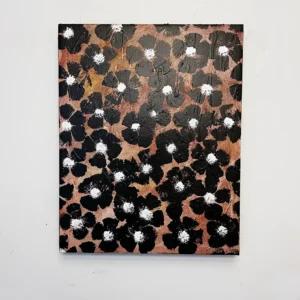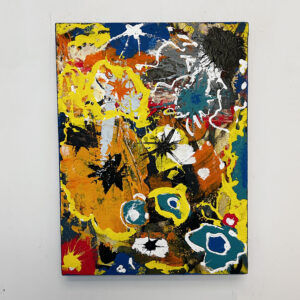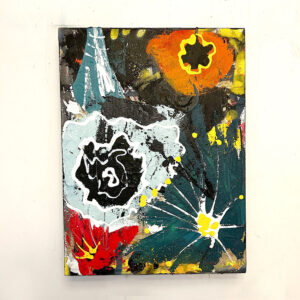Pittsburgh’s industrial past is deeply embedded in its cultural identity, shaping the city’s landscape and the lives of its residents. This history has left an indelible mark on the city’s contemporary art scene, influencing the themes, materials, and aesthetics of local artists. In this article, we explore how Pittsburgh’s industrial heritage inspires contemporary artists, the significance of this legacy, and notable works that reflect this enduring influence.
The Legacy of Industrialization
Pittsburgh’s transformation from a frontier town to an industrial powerhouse began in the 19th century, driven by the steel industry. The city became known as the “Steel City,” with its mills and factories symbolizing the strength and resilience of its workforce. Although the decline of the steel industry in the late 20th century brought economic challenges, it also spurred a cultural and artistic renaissance.
The remnants of this industrial era, from abandoned factories to rusted machinery, now serve as both literal and metaphorical materials for contemporary artists. These relics provide a tangible connection to the past, inspiring works that honor the city’s history while reimagining its future.
Thematic Exploration in Contemporary Art
Contemporary artists in Pittsburgh often draw on the city’s industrial past to explore themes of labor, resilience, transformation, and identity. These themes are evident in a variety of mediums, from painting and sculpture to photography and installation art.
Labor and Resilience
Artists like LaToya Ruby Frazier use their work to document and critique the socioeconomic impacts of industrial decline. Frazier’s photography series, “The Notion of Family,” captures the lives of three generations of women in her family, highlighting the enduring effects of industrial pollution and economic hardship. Her work serves as a powerful commentary on resilience and the human cost of industrialization.
Transformation and Renewal
The theme of transformation is prevalent in the work of sculptor Thaddeus Mosley, whose abstract wood sculptures are made from salvaged materials. Mosley’s use of reclaimed wood symbolizes renewal and the potential for beauty and creativity in what is often discarded. His sculptures, with their organic forms and intricate textures, evoke a sense of rebirth and continuity with the natural world.
Materiality and Aesthetics
The materials used by Pittsburgh’s contemporary artists often reflect the city’s industrial heritage. Metal, wood, and found objects are commonly incorporated into artworks, infusing them with historical significance and a sense of place.
Metal and Steel
Metalwork is a prominent feature in the art of Dee Briggs, whose large-scale steel sculptures explore geometric forms and spatial relationships. Briggs’ work often involves manipulating industrial materials to create pieces that are both structurally complex and aesthetically striking. Her sculptures can be seen in public spaces throughout Pittsburgh, serving as modern monuments to the city’s steel legacy.
Found Objects and Assemblage
Artists like Scott Kowalski and Ryder Henry utilize found objects to create intricate assemblages and miniature urban landscapes. Kowalski’s modern expressionist paintings often incorporate metal and other materials to add depth and texture, creating a dynamic interplay between the abstract and the tangible. Henry’s detailed models of futuristic cities use cardboard and other discarded materials, transforming the mundane into visionary art.
Notable Projects and Exhibitions
Several notable projects and exhibitions in Pittsburgh highlight the influence of industrial history on contemporary art. These initiatives not only celebrate the city’s heritage but also engage the community in meaningful ways.
The Carrie Furnaces
The Carrie Furnaces, part of the Rivers of Steel National Heritage Area, are a prime example of industrial ruins repurposed for contemporary art. These towering structures, once part of a bustling steel mill, now serve as a venue for large-scale art installations and performances. Artists use the dramatic backdrop of the furnaces to create works that resonate with the site’s historical significance.
The Mattress Factory
The Mattress Factory, a contemporary art museum in Pittsburgh, features installations that often engage with themes of industrial history and urban transformation. The museum’s focus on site-specific art allows artists to respond directly to the physical and historical context of the building, a former mattress warehouse. Exhibits at the Mattress Factory frequently incorporate industrial materials and motifs, reflecting the city’s past while pushing the boundaries of contemporary art.
Industrial Arts Co-op
The Industrial Arts Co-op (IAC) is a collective of artists dedicated to creating large-scale public art projects that celebrate Pittsburgh’s industrial heritage. One of their notable projects, “The Workers,” is a series of sculptures made from steel and other industrial materials. These sculptures pay homage to the city’s labor history and serve as a tribute to the workers who built Pittsburgh.
The Role of Community and Education
Community engagement and education are integral to the relationship between Pittsburgh’s industrial history and contemporary art. Programs and initiatives aimed at preserving industrial heritage and promoting artistic expression play a crucial role in this cultural dialogue.
Community Workshops and Art Centers
Organizations like the Pittsburgh Center for Arts & Media and the Society for Contemporary Craft offer workshops and classes that teach traditional and contemporary art practices. These programs often emphasize the use of industrial materials and techniques, fostering a deeper understanding of the city’s artistic and industrial heritage.
Educational Programs
Educational programs at institutions like Carnegie Mellon University and the University of Pittsburgh integrate art and history, encouraging students to explore the connections between Pittsburgh’s industrial past and its contemporary culture. These programs cultivate a new generation of artists who are informed by and responsive to the city’s rich history.
Conclusion
The influence of Pittsburgh’s industrial history on contemporary art is profound and multifaceted. Artists draw inspiration from the city’s legacy of labor, resilience, and transformation, creating works that honor the past while envisioning new possibilities for the future. Through the use of industrial materials, thematic exploration, and community engagement, Pittsburgh’s contemporary art scene continues to evolve, reflecting the dynamic interplay between history and innovation.
As the city looks forward, the enduring legacy of its industrial heritage will undoubtedly continue to shape and inspire its artists. This rich cultural dialogue ensures that Pittsburgh’s art scene remains vibrant, relevant, and deeply connected to its roots, celebrating the past while embracing the future.


